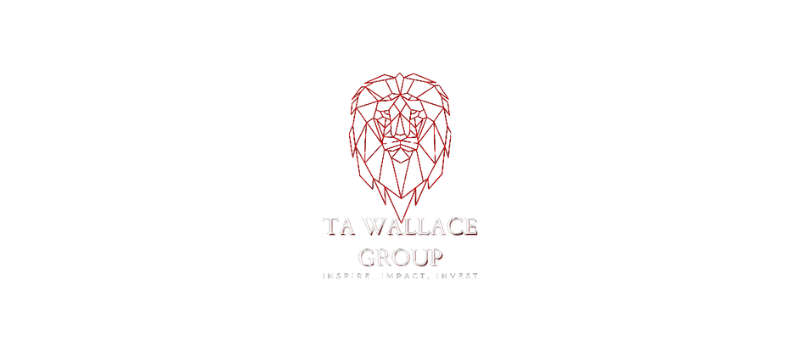7 Powerful Communication Skills: The Ultimate Guide to Deeper Connection and Lasting Impact in 2025
Effective communication is the cornerstone of meaningful relationships, successful careers, and personal fulfillment. Mastering communication skills allows you to forge deeper connections, resolve conflicts more efficiently, and create lasting impact in both professional and personal spheres. This comprehensive guide provides actionable strategies, expert insights, and practical techniques to transform your communication abilities and enhance your interpersonal effectiveness in today’s increasingly digital world. What Are the Essential Communication Skills for Deeper Connection? The foundation of meaningful connection rests on seven core communication skills that, when mastered, dramatically improve your ability to relate to others. These skills work together to create authentic interactions that resonate on a deeper level and leave lasting impressions. 1. Active Listening: The Art of Being Fully Present Active listening goes beyond simply hearing words—it involves fully engaging with the speaker and their message. This powerful skill forms the bedrock of meaningful connection by demonstrating genuine interest and respect. To practice active listening effectively: Research shows that people retain only about 25% of what they hear, highlighting why deliberate listening practices are essential for deeper understanding. 2. Emotional Intelligence: Understanding the Feelings Behind the Words Emotional intelligence is your ability to recognize, understand, and manage both your emotions and those of others during communication. This skill allows you to navigate difficult conversations with empathy and awareness. To develop stronger emotional intelligence: High emotional intelligence correlates with stronger relationships, better conflict resolution, and increased leadership effectiveness across various contexts. How Can You Overcome Common Communication Barriers? Even skilled communicators face obstacles that can derail meaningful exchanges. Understanding these barriers and implementing strategies to overcome them is crucial for maintaining connection. 3. Clarity and Conciseness: Communicating with Precision In today’s information-saturated environment, the ability to communicate clearly and concisely is more valuable than ever. Precision in communication eliminates confusion and ensures your message lands as intended. To enhance clarity in your communication: Studies show that messages delivered with clarity and brevity are 50% more likely to be remembered and acted upon than lengthy, complex communications. 4. Assertiveness: Expressing Needs While Respecting Others Assertiveness represents the balanced middle ground between passive and aggressive communication styles. This skill enables you to express your thoughts, feelings, and needs honestly while maintaining respect for others. To communicate assertively: Assertive communicators report higher satisfaction in relationships and experience less communication-related stress compared to those using passive or aggressive styles. What Role Does Digital Communication Play in Creating Lasting Impact? As our interactions increasingly occur through digital channels, mastering technology-mediated communication has become essential for creating meaningful connection in both personal and professional contexts. 5. Digital Communication Fluency: Connecting Across Platforms Digital platforms require unique approaches to ensure your message maintains its impact when face-to-face cues are limited. Developing fluency across communication technologies enhances your ability to connect regardless of the medium. To improve your digital communication skills: Organizations with strong digital communication practices report 25% higher employee engagement and significantly better customer relationships than those without established protocols. How Can You Tailor Communication to Different Audiences? Creating lasting impact requires adapting your communication approach based on your audience’s needs, preferences, and context. This flexibility demonstrates respect and increases the likelihood your message will resonate. 6. Adaptability: Adjusting Your Style for Maximum Effect Communication adaptability involves recognizing when to shift your approach to better connect with different individuals or groups. This skill combines observation, empathy, and flexibility. To develop greater communication adaptability: Leaders who demonstrate high communication adaptability consistently outperform peers in team effectiveness measures and change management initiatives. What Makes Communication Truly Memorable? The most impactful communicators go beyond mere information exchange to create experiences that resonate emotionally and intellectually with their audience. 7. Storytelling: Creating Narratives That Stick Storytelling transforms ordinary information into compelling narratives that create emotional connection and improve retention. This ancient skill remains one of our most powerful tools for lasting communication impact. To enhance your storytelling abilities: Research demonstrates that information delivered through stories is up to 22 times more memorable than facts presented alone, making storytelling essential for lasting impact. How Can You Measure Improvement in Communication Skills? Progress in communication effectiveness can be measured through several key indicators: Regular self-assessment and actively seeking feedback from trusted sources provides valuable data to guide your continued growth as a communicator. Conclusion Mastering communication skills is a lifelong journey that yields profound rewards in every area of life. By developing active listening, emotional intelligence, clarity, assertiveness, digital fluency, adaptability, and storytelling abilities, you create the foundation for deeper connections and lasting impact in all your interactions. Start by focusing on one skill at a time, practicing consistently in low-stakes situations before applying your improved abilities to more challenging contexts. Remember that communication mastery isn’t about perfection—it’s about continuous improvement and genuine connection.
Unlocking Endless Opportunities: A Comprehensive Guide to Cultivating an Abundance Mentality

Are you ready to shift your mindset and discover infinite possibilities for growth, success, and fulfillment? Learn how an abundance mentality can transform your life and create opportunities you never thought possible. What Is an Abundance Mentality? Before we jump into how you can cultivate it, let’s clarify what an abundance mentality is. First introduced by Stephen Covey in his book The 7 Habits of Highly Effective People, an abundance mentality refers to the mindset that there’s plenty of success, happiness, and resources to go around for everyone. Instead of seeing life as a zero-sum game (where one person’s gain is another person’s loss), this mindset fosters collaboration, gratitude, and an openness to new possibilities. People with an abundance mentality believe opportunities are limitless and are more likely to approach challenges with creativity, generosity, and optimism. On the flip side, those with a scarcity mindset may feel threatened by others’ success, focus on limitations, and operate out of fear or competition. The Difference Between Scarcity and Abundance Mentality Here’s a clear breakdown for perspective: Now that we’ve defined the concept, let’s uncover actionable steps to develop an abundance mentality in your life. Why Does an Abundance Mentality Matter? An abundance mentality doesn’t just help you succeed financially or professionally; it improves your overall well-being. Research shows that people who think abundantly tend to experience lower stress levels, higher satisfaction, and greater resilience when facing challenges. For example, a study by Stanford University found that individuals with a growth-oriented mindset (closely linked to abundance mentality) were more likely to achieve their goals compared to those with fixed, scarcity-based thinking. Are you curious about how you can benefit from cultivating this mindset? Here’s what developing an abundance mentality can do for you: It’s clear that adopting this mindset could be life-changing. But how do you actually develop it? 8 Proven Strategies to Cultivate an Abundance Mentality 1. Start with Gratitude Gratitude is the foundation of an abundance mentality. By focusing on what you already have, you’ll stop feeling deprived and start recognizing the wealth that’s already present in your life. Actionable Tip: Every morning, write down three things you’re grateful for. These don’t have to be big things; even simple joys like a good cup of coffee or a sunny day can shift your mindset. 2. Eliminate Scarcity-Based Language Your words shape your thoughts. Phrases like “I can’t afford this,” “There’s not enough time,” or “I’m not good enough” reinforce a scarcity mindset. Actionable Tip: Reframe your language. Instead of saying, “I’ll never have the time,” try, “I’ll prioritize my time to make this work.” 3. Focus on Growth, Not Perfection People with an abundance mentality understand that life is about progress, not perfection. Every mistake or failure is simply an opportunity to learn and grow. Example: If you didn’t get the promotion you were hoping for, see it as a sign to improve your skills, not as proof you’re unworthy. 4. Surround Yourself with Abundant Thinkers The people you spend time with can either lift you up or drag you down. Surround yourself with individuals who support you, celebrate your success, and inspire you to dream bigger. Actionable Tip: Connect with positive, growth-oriented communities or mentors. 5. Practice Generosity An abundance mentality thrives on giving. When you share your time, knowledge, or resources with others, you’ll strengthen your belief that there’s always enough to go around. Actionable Tip: Volunteer, mentor someone, or even offer a helping hand to a colleague in need. 6. Visualize Your Success Visualization creates clarity and reinforces a positive outlook. Picture what an abundant life looks like for you and how you’ll achieve it. Exercise: Spend 5-10 minutes a day visualizing your goals. Imagine not only achieving them but also feeling the joy and gratitude that comes with it. 7. Recognize and Replace Limiting Beliefs Scarcity often stems from limiting beliefs like “I don’t deserve success” or “I’m not good at this.” These thoughts can sabotage your potential. Actionable Tip: Write down one limiting belief you hold. Examine it, challenge it, and replace it with a more empowering one. Example: Replace “I’m not creative” with “I can cultivate creativity through practice and exploration.” 8. Celebrate Others’ Wins Instead of feeling envious when someone else achieves success, learn to celebrate their wins. It’s a powerful way to reinforce abundance thinking. Actionable Tip: The next time a friend or colleague shares good news, write them a congratulatory note or express your support sincerely. Frequently Asked Questions About Abundance Mentality Q1. Can an abundance mentality improve my financial situation?Absolutely! An abundance mindset shifts your focus from what you lack to opportunities for growth, helping you identify new income streams, collaborations, or investments. Q2. How does it affect relationships?When you adopt an abundance mentality, you’re less likely to view others as threats or competitors. This fosters trust, collaboration, and deeper connections. Q3. What if I’m naturally pessimistic?It’s okay to start small. Begin by practicing gratitude and gradually challenging negative thoughts. Mindset shifts don’t happen overnight, but consistency makes a big difference. Q4. Is the abundance mentality just about positive thinking?Not quite. While positivity is part of it, the abundance mentality is ultimately about belief, action, and a willingness to grow. It’s a mindset backed by goal-setting and proactive behavior. Real-Life Story of Abundance Mentality in Action Consider Sarah, a small business owner who embraced an abundance mentality. Faced with intense competition, she decided not to stress over losing customers but instead focused on adding value to her services. She started collaborating with complementary businesses, offering bundled deals and sharing marketing resources. Within a year, not only did her customer base grow, but her partnerships led to unexpected opportunities, including a major new client she wouldn’t have reached on her own. This real-life example shows how abundance thinking creates a ripple effect of success. Key Takeaways and Next Steps Cultivating an abundance mentality isn’t just about changing how you think; it’s about how you live. Here’s a quick recap of what
How to Master the Sucess Mindset : 10 Proven Strategies That Will Transform Your Life

Introduction: The Power of Your Mental Framework Have you ever wondered why some people consistently achieve their goals while others struggle despite similar talents and opportunities? The answer often lies not in skills or resources, but in mindset. Your sucess mindset—the collection of beliefs, attitudes, and thought patterns that shape how you approach challenges—can be the difference between reaching your potential and falling short of your dreams. Research from Stanford University psychologist Carol Dweck reveals that people with a growth mindset (those who believe abilities can be developed) consistently outperform those with a fixed mindset (those who believe abilities are static). In fact, developing a sucess mindset isn’t just beneficial—it’s essential for achieving long-term, sustainable results in any area of your life. Today, I’m sharing 10 powerful, research-backed strategies that will help you develop an unshakable sucess mindset. These aren’t just theoretical concepts—they’re practical approaches used by top performers across industries that you can implement immediately to transform your thinking and your results. Strategy #1: Embrace the Sucess Mindset Revolution At the core of every success story lies the fundamental belief that improvement is always possible. The growth mindset, pioneered by Dr. Carol Dweck, stands in stark contrast to a fixed mindset, which assumes talents and abilities are innate and unchangeable. When you embrace a growth mindset, you view challenges as opportunities rather than threats. Obstacles become stepping stones, not roadblocks. A study published in the Journal of Personality and Social Psychology found that individuals with a growth mindset were significantly more likely to tackle difficult tasks and persist through setbacks. How to cultivate it: Begin by paying attention to your internal dialogue. When facing a challenge, replace thoughts like “I’m not good at this” with “I’m not good at this yet.” Add the powerful three-letter word “yet” to your vocabulary when describing skills you’re developing. Additionally, celebrate effort over natural talent. Research shows that praising process (“you worked really hard”) rather than intelligence (“you’re so smart”) develops resilience and determination. Make it a habit to recognize your progress, however small, rather than focusing exclusively on outcomes. Strategy #2: Set SMART+ Goals That Ignite Passion Goal-setting isn’t just helpful—it’s transformative when done correctly. The most successful people don’t just have vague aspirations; they set Specific, Measurable, Achievable, Relevant, and Time-bound (SMART) goals. But the real magic happens when you add the “+” factor: emotional connection. A compelling study from the Dominican University found that people who wrote down their goals, shared them with others, and maintained accountability were 33% more successful in achieving them than those who merely thought about their goals. How to implement it: Create goals that stretch you without breaking you. For each goal, write down not just what you want to achieve, but why it matters deeply to you. How will accomplishing this transform your life? What emotions will you experience? This emotional anchor will fuel your persistence when challenges arise. For instance, instead of “I want to increase my income,” try “I will increase my income by 20% within 12 months by developing valuable skills in digital marketing, allowing me to provide better educational opportunities for my children.” Strategy #3: Master Your Internal Dialogue The conversations you have with yourself shape your reality more than you might realize. Research from the National Science Foundation estimates that we have between 12,000 and 60,000 thoughts per day—and amazingly, up to 80% of these thoughts are negative for the average person. Successful people consciously redirect this internal dialogue. They practice self-talk that empowers rather than diminishes. When Serena Williams faces a challenging match point, she doesn’t tell herself, “Don’t mess up.” Instead, her self-talk focuses on “Hit a strong serve. You’ve done this thousands of times.” How to transform it: Start a daily practice of positive affirmations tied to your goals and values. These aren’t empty phrases but powerful neural retraining tools. Harvard Medical School research suggests that repeating positive statements actually creates new neural pathways over time. Create a list of empowering phrases that resonate with you: “I persistently overcome challenges,” “I continuously grow and improve,” or “I am worthy of success and capable of achieving it.” Repeat these during morning routines, before challenging situations, or whenever negative thoughts arise. Strategy #4: Visualize Success with Scientific Precision Visualization isn’t New Age fluff—it’s a scientifically validated technique used by Olympic athletes, successful entrepreneurs, and peak performers across disciplines. When you vividly imagine success, your brain creates neural patterns similar to those produced during actual performance. A fascinating study with basketball players demonstrated that those who visualized perfect free throws for 20 minutes daily improved almost as much as those who physically practiced for the same amount of time. How to practice it: Spend 5-10 minutes daily in focused visualization. Imagine yourself successfully completing an important task or achieving a significant goal. Engage all your senses—what do you see, hear, feel, smell, or even taste in this moment of success? The more vivid and detailed your mental image, the more powerful the effect. Professional golfer Jack Nicklaus once said, “I never hit a shot, not even in practice, without having a very sharp, in-focus picture of it in my head.” Apply this same precision to your visualization practice. Strategy #5: Reframe Failure as Valuable Feedback Perhaps the most distinguishing characteristic of highly successful people is their relationship with failure. While many avoid situations where they might fail, those with a success mindset actively pursue growth opportunities, knowing that failure is simply data—not a definition of their worth. Thomas Edison famously remarked about his thousands of unsuccessful attempts at creating a working light bulb: “I have not failed. I’ve just found 10,000 ways that won’t work.” This perspective transforms setbacks from discouraging dead-ends into informative waypoints on the journey to success. How to develop this mindset: After any setback, large or small, ask yourself three questions: This simple reflection process converts failures into stepping stones. A Harvard Business School study found that organizations that systematically reflect on failures improve

